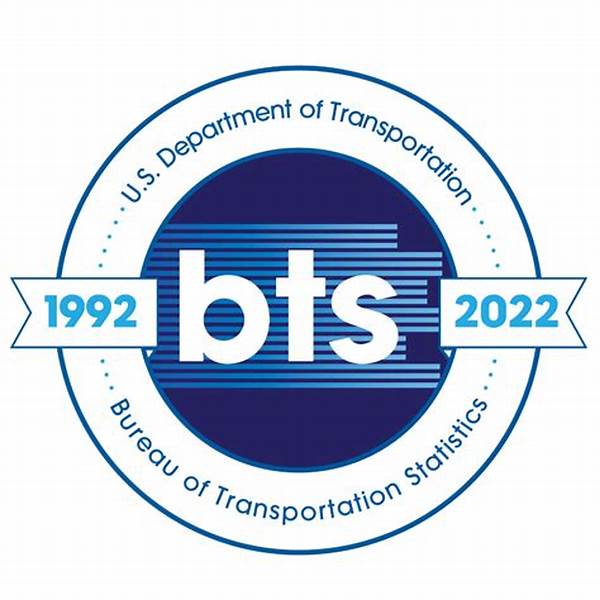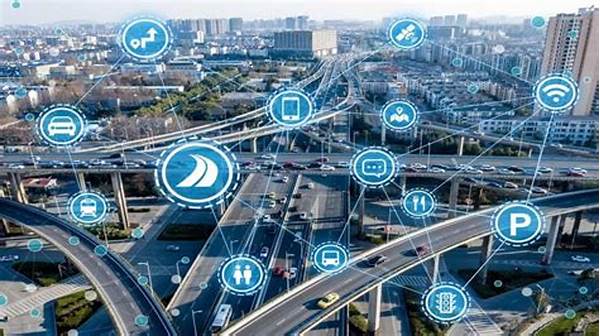Policy Making With Transportation Data
The integration of transportation data into policy-making processes is an essential trend in contemporary governance. By leveraging the vast amounts of data generated within transportation systems, policymakers can formulate strategies that are evidence-based, efficient, and beneficial for the populace. Policy making with transportation data facilitates a nuanced understanding of transit patterns, congestion trends, and public transit efficacy, thereby allowing for targeted interventions that address pressing transportation challenges.
Read Now : Personalized Vehicle Customization Services
The Role of Transportation Data in Policy Making
In today’s fast-paced world, crafting sound policies fueled by transportation data is how you roll if you want results. Governments and agencies are tapping into heaps of data from GPS, traffic sensors, and public transit records. This treasure trove, dude, guides their moves, helping them create efficient, smooth, and green transport systems. Policy making with transportation data is the secret sauce that drives everything from traffic decongestion to boosting public transit. It’s like having the cheat code for city planning, bro. The coolest part? These data-driven strategies help find out what’s the deal with traffic jams and fine-tune public services, making sure everything runs like a well-oiled machine. So, tapping into this data isn’t just about being on-trend; it’s about transforming cities into kickass places to live.
How Transportation Data Transforms Policy Decisions
Policy making with transportation data is all about the vibes, you know? First up, it helps keep it real by tracking demand patterns, then uses those numbers to tweak things for ultimate efficiency. This data is the low-key hero helping predict future needs and polishing policy to shine bright. When cities flow smoother, it’s a major win. Policy making with transportation data totally changes the game by providing clear insights—it creates epic urban lifestyles, making commutes feel less like a drag and more like a breeze. Plus, who can resist a city that feels futuristic and friendly? Basically, it’s like having the ultimate lifehack at your fingertips.
Transportation Data: A Game-Changer for Urban Policy
We’re talking policy making with transportation data, baby! Imagine cities designed for people, not just cars. Using data means looking ahead, tweaking policies real-time when congestion gets gnarly. It’s all about sustainable, urban flow that vibes with the environment. Forget cookie-cutter solutions; it’s about tailored strategies, man. Transportation data is like rocket fuel for public policy: accurate, dynamic, unstoppable. Think GPS routes that avoid not just traffic but pollution too. And then, there’s safety: deploying resources based on actual risk areas, making streets safe and chill for everyone. Future policies? Real-time, people-centric, and hella smart.
Revolutionizing Urban Spaces through Data Insights
Policy making with transportation data is like transforming chaos to harmony. It brings an honest-to-goodness blessing: less congestion, more efficiency. Walking the talk is what’s up; cutting down on commutes and throwing shade at urban sprawl are key. It’s all about creating cities that breathe easy, live easy, and travel smooth. Using transportation data, aligning policies becomes intuitive—aligning city functionalities with people’s daily hustle. Ain’t that the dream? When data becomes our guide, drafting policies isn’t just a chore, it’s a masterpiece in urban living. Perfectly aligned, perfectly executed.
The Nitty-Gritty of Data-Driven Policy Making
Now, if you’re keen on understanding how policy making with transportation data impacts our daily grind, here’s the lowdown no one tells you. It cuts through red tape and boosts commute efficiency. Imagine customizing transit routes for rush hours, ditching delays, and rolling with smooth vibes. Urban planners can sort out which areas need bike lanes or improve traffic signals, all based on real-time jams people face on the reg. The result? Policies that don’t just sit on the shelf but actually serve, entertain, and elevate public experiences. By going data-driven, we craft solutions reflecting our lifestyle—where living isn’t just a rat race but a symphony of urban innovation.
Read Now : “bmw I7 Vs Competitor Analysis”
Cutting-Edge Strategies for Data Utilization
The magic of policy making with transportation data lies in the sweet spot where innovation meets practicality. It’s like a scene out of a smart city movie—strategies refined and constantly refreshed. Integrating crowd-sourced data with municipal dashboards lights the path forward. You’re leveraging digital ecosystems to fine-tune every traffic light, every bus schedule, and even street repairs. Cue the urban life anthem! We’re going from boom to zen; data makes policy responsive, a canvas painted with precision and community spirit. Masterpieces emerge when data isn’t just information, but inspiration feeding the tapestry of a city you love to call home.
Sweet Spot: Crafting Policies with Edge
Let’s wrap up this policy making with transportation data gig, imagining a future that’s not somewhere far off but right around the corner. Think of streets decked out with smart sensors, on-the-go transport hubs, and tunes that get the commuters moving. Policies built on transportation data aren’t just efficient but exciting—they become the lifeline making cities pulse with energy. Whether it’s unlocking seamless rides or curbing urban sprawl, data-driven policies continually evolve. Looking at the big picture, this real-time insight and data-led adaptability promise a future that’s not just about getting places but enjoying the journey itself. From street savvy execution to strategic planning, data-fueled policies breathe life into urban existence—simply put, they make living, loving, and moving outrageously awesome!



